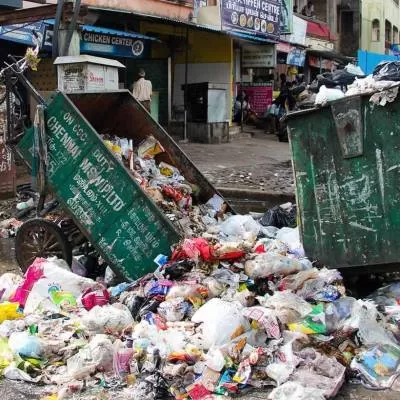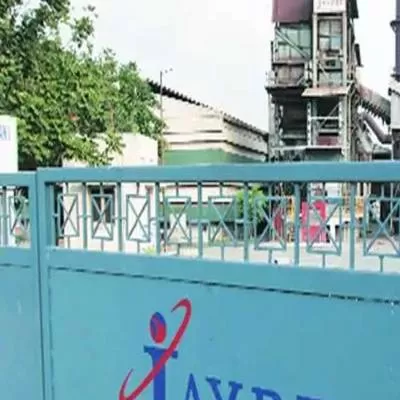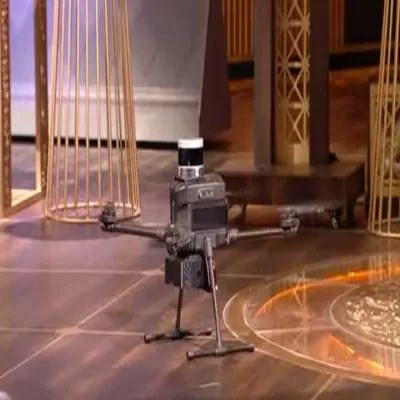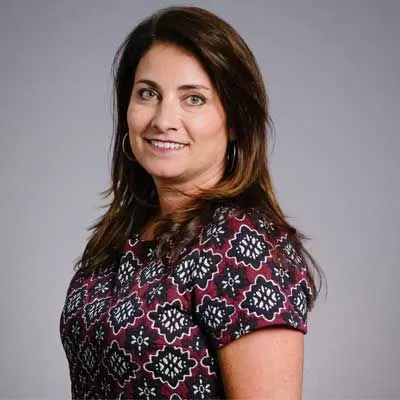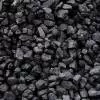- Home
- Technology
- Flying High
Flying High
In the next in a series of interviews with prominent civil engineers, Janaki Krishnamoorthi meets Kamal Gupta, Executive Director, J Kumar Infraprojects Ltd, Mumbai.
Flyovers have always fascinated Kamal Gupta — he dreamt of building them since his childhood. And he did, along with much, much more. “I've been involved in the construction of almost every segment of transportation engineering, from roads, flyovers, bridges and subways, to skywalks, runways and elevated corridors,” says the Executive Director of J Kumar Infraprojects Ltd (JKIL). “Now, I'm looking forward to handling the Mono Rail project,” he adds.
Gupta's credo: Dream, achieve and move on to the next dream. “We should never become content with one milestone but keep on aspiring for more, otherwise we will stagnate,” avers the 37 year-old, who joined JKIL, which was established by his father Jagdish Kumar Gupta, Chairman and Managing Director, along with his brother Nalin in 1996.
Triggered by a fascination for flyovers and fuelled by constant exposure to the projects his father was handling, it was natural for Gupta to take up civil engineering. “From the age of 12, during vacations, my brother and I would visit the office and sites with our father,” he remembers. “Actually, being kids, we were more interested in playing than going to office. So our father used to give us Rs 5 if we attended office!” As he grew up, though, the visits became an instinctive inclination rather than an imposed activity. For Gupta, his father is mentor and guru. “I have learnt a lot from my father,” he says. “He is not a civil engineer but he knows the ins and outs of civil engineering. Apart from technical knowledge, he also taught me how to deal with people and instilled certain principles that, in his view, matter in the long run.”
JKIL has executed a diverse range of infrastructure projects, from residential and commercial buildings to sports complexes, flyovers, roads, dams, canals, aqueducts and foundation piling. However, its primary focus area has been transportation engineering with a strong presence in Maharashtra and Gujarat. Today, it has an order book of Rs 1,800 crore. The company recently bagged the Navi Mumbai metro rail project and Mhape Flyover. That too, after competing with major players like HCC, L&T, Gammon and Simplex. “We have one major advantage over these companies,” reveals Gupta. “Being medium-sized, our overheads are less and, consequently, our bids are low.” He goes on to share his views and experiences with CW.
Wonders of civil engineering
In civil engineering, no project is identical. They vary depending on several factors like project design, budget, materials and site conditions. We always have something different and innovative to do and keep learning in the process. We are also doing something for the community and I get immense satisfaction when I see people using what I have built. It is an exciting profession but one should be prepared for hard work. I work 16 hours a day but as I enjoy my work, I do not grudge the long hours.
Hands-on experience
There is a huge difference between what we learn theoretically in our colleges and what we do practically. Hence, the curriculum should have one year of internship. And this should not be at the end of the course but midway, perhaps after two years. This will provide sufficient hands-on experience and enable students to assimilate the theory better. I was fortunate in this regard as I was visiting project sites with my father. Even then, my father made me work as a junior engineer for one year!
Quality and speed
If quality and speed are maintained while executing a project, economy is taken care of automatically. We have always endeavoured to finish our projects on time, sometimes even before time, which has earned us a bonus. But often projects do get delayed, largely in urban areas. In cities like Mumbai, delay occurs owing to three major issues: land acquisition, encroachment and underground utilities. We also have to work without disrupting the heavy traffic flow in Mumbai. But a contractor on his part can speed up the process by using appropriate technology and machinery. For instance, with a hydraulic piling rig, one can drive six piles a day while the conventional tripod piling rig takes six days to drive a pile. In addition, the noise levels and vibrations are also much lower. Likewise, a mobile concrete boom placer can reach up to a height of 37 m within a few seconds as against the stationery concrete pump, which takes six to seven hours as 50-odd pipes have to be manually attached by labourers and then towed with a van. Of course, the difference in equipment costs is vast as the tripod rig costs around Rs 15-20 lakh while the price of a hydraulic rig would range between Rs 3 crore and Rs 4.5 crore. JKIL has 23 hydraulic piling rigs. Similarly, a boom placer costs around Rs 1.5 crore as against the concrete pump that costs around Rs 16 lakh. Initially, it is a huge capital investment but it will be offset in the long run.
Technological innovation
I strongly believe in the use of innovative modern technologies and we have used them in many of our projects. Sometimes they have also helped us resolve some problems, like in the bridge on Mithi River for two additional railway tracks between Bandra and Mahim. To lay the foundation, cofferdams had to be erected but government officials felt that such obstructions in the river may create problems, a fear created by the 26/7 deluge in Mumbai. Mumbai Rail Vikas Corporation was even thinking of scrapping the project until we came up with an innovative solution. We used an overhead gantry to drive the piles that totally eliminated the need for cofferdams. The superstructure was also made of precast elements with little support from the ground. We are now working on yet another innovative project: the segmental Eastern Freeway in Panjarpole. Being built above a road and a metro rail corridor at a height of 24 m, it will be the highest flyover in Mumbai.
Elevated corridors
In future we will have to shift to elevated corridors, more so in cities like Mumbai where there is very little open space. So the only way to go is vertical, whether it is residential or transportation. In fact, in countries like China, there are already three to four layers of elevated corridors in operation. In Mumbai too, some are being executed or being planned. Apart from the flyover in Panjarpole, there is the metro rail, high-speed corridor between Bandra and Dahisar on the Western Express Highway and the railway corridor between Churchgate and Virar above the existing western railway line.
Track Record: Kamal Jagdishkumar Gupta
• BE (Civil) from NYSS College of Engineering, Airoli (now called Datta Meghe College of Engineering)
• Diploma in Finance Management from Narsee Monjee Institute of Management Studies, Mumbai
• Joined JKIL in 1986
Major projects handled:
• Segmental flyover on Ambedkar Road at Sion Hospital , Hindmata Cinema and King Circle, Mumbai
• Flyover at Seven Hills junction, Aurangabad
• Thakur Complex Flyover, Kandivali, Mumbai
• Times of India Flyover, Malad, Mumbai
• Goregaon Sports Complex, Malad, Mumbai
• Hadapsar Flyover, Pune
• Flyover in Bhiwandi
• Spillway earthen dam in Yeotmal, Maharashtra
Major projects in progress:
• Segmental Eastern Freeway in Panjarpole, Mumbai
• Flyover at Kapurbawdi junction, Thane
• Skywalk at Grant Road, Mumbai
• Flyover cum rail-over-bridge in Jogeshwari, Mumbai
• Flyover cum rail-over-bridge on Milan Subway, Mumbai
• Parel to Mahalaxmi Mono Rail, Mumbai
• Road cum flyover in Ahmedabad, Gujarat
Challenging projects:
Project: Swimming pools at Goregaon Sports Complex, Malad
Period: 2000 to 2002
Cost: Rs 15 crore
Background: A large sports complex with several indoor and outdoor sports facilities, swimming pools, restaurant/bar, guest rooms
Challenges: While building the whole complex with so many facilities was very demanding, the biggest challenge was to create the three swimming pools: an Olympic size pool, a children's recreation pool and a diving pool at an elevated level. As the pools were located above the car parking area, they had to be totally leak-proof. “Precautions were taken at various levels,” reveals Gupta. “Special care was taken to ensure that the joints were properly sealed, zinc plates were used as water stoppers and suitable chemical coating was also carried out. In addition, we used fibre-reinforced concrete to make it homogenous and lessen porosity. Plastering was done with fly ash-based PPC cement. Some of these applications were relatively new then.”
Project: Three flyovers on Dr Ambedkar Road
Period: 2008 to 2011
Cost: Rs 170 crore
Background: Of the three flyovers, two at Hindmata junction and Sion Hospital, are already operational. In the King Circle Flyover, the northbound side is already open to traffic while the southbound section is scheduled to be opened in May.
All of them are based on precast segmental construction technology where beams are fabricated in pieces, then transported to site, aligned, glued and stressed with special high-tension tendons.
Challenges: The foundation was a major challenge in all three flyovers. Of the 90 foundations, 80 had to be tailor-made as there were several utilities underground, built during the British Raj that could not be touched. “For every foundation, we would dig a trench, plot the utilities and refill the trench for smooth traffic flow,” recalls Gupta. “We would then design the foundation, open up again and then do the piling in between the pipelines and cables. We had to shift the utilities only in two places.” As traffic was heavy, some of the work, like transporting the beam segments on multi-axle trailers and installation with large cranes, could be done only at night. Disturbed by the noise, the local residents began to complain. So meetings had to be held to convince them and accept some of their suggestions. The southbound King Circle (Tulpule chowk) Flyover proved to be very challenging as it had to be merged with the existing Aurora Flyover after demolishing one-third of the structure. The first of its kind in Maharashtra, the intricate merger involved considerable detailing and technical inputs. “Aurora Flyover going southbound is a three-lane flyover while the new one has only two lanes,” explains Gupta. “So we had to take only two lanes of the old bridge and leave the third lane as it was. We had to increase the width of the old flyover to synchronise its width with the two lanes of the new bridge. We also had to shift the new flyover to one side to keep the third lane of the old bridge operational.” However when the new flyover was shifted, additional load was falling on the utilities below and special provisions like encasement of utility pipes and sand padding had to be made to ensure the safety of the utilities. In addition to rehabilitating the old bridge with profile corrections and repairing expansion joints, the gradient had to be maintained throughout and the merger point had to be smooth with no jerks.
Project: Grant Road Skywalk
Period: Ongoing (started in 2009 and scheduled to be complete by December 2011)
Cost: Rs 50.48 crore
Background: The Skywalk is already open to the public. But the central rotary portion with escalators at Nana Chowk is yet to be erected.
Innovative design: The circular rotary will be suspended by cables emanating from a central 42-m-high pylon. The skywalk will be erected with imported cables coming in from Italy under the supervision of technicians deputed by the cable manufacturing company.
Challenges: The first of its kind in Mumbai, every aspect of its installation is expected to be challenging. “The rotary is like an ellipse that curves at different angles at different joints,” explains Gupta. “Hence the 20-odd small segments, which will be un-identical, must be fabricated with precision as they have to dovetail accurately. They will then be transported to site and installed. Likewise, the pylon will also be fabricated in different pieces and erected at site. We will need special jacks and cranes and the installation will have to be done at night.”
- Construction
- Update
- Portal
- Magazine
- CW-India
- May
- 2011
- India
- Kamal Gupta
- J Kumar Infraprojects Ltd
- Mono Rail
- civil engineering
- infrastructure
- Maharashtra
- Gujarat
- Navi Mumbai
- HCC
- L&T
- technology
- machinery
- capital investment
- Mumbai Rail Vikas Corporation
- China
- Panjarpole
- Grant Road Skywalk
- Goregaon Sports Complex
In the next in a series of interviews with prominent civil engineers, Janaki Krishnamoorthi meets Kamal Gupta, Executive Director, J Kumar Infraprojects Ltd, Mumbai. Flyovers have always fascinated Kamal Gupta — he dreamt of building them since his childhood. And he did, along with much, much more. “I've been involved in the construction of almost every segment of transportation engineering, from roads, flyovers, bridges and subways, to skywalks, runways and elevated corridors,” says the Executive Director of J Kumar Infraprojects Ltd (JKIL). “Now, I'm looking forward to handling the Mono Rail project,” he adds. Gupta's credo: Dream, achieve and move on to the next dream. “We should never become content with one milestone but keep on aspiring for more, otherwise we will stagnate,” avers the 37 year-old, who joined JKIL, which was established by his father Jagdish Kumar Gupta, Chairman and Managing Director, along with his brother Nalin in 1996. Triggered by a fascination for flyovers and fuelled by constant exposure to the projects his father was handling, it was natural for Gupta to take up civil engineering. “From the age of 12, during vacations, my brother and I would visit the office and sites with our father,” he remembers. “Actually, being kids, we were more interested in playing than going to office. So our father used to give us Rs 5 if we attended office!” As he grew up, though, the visits became an instinctive inclination rather than an imposed activity. For Gupta, his father is mentor and guru. “I have learnt a lot from my father,” he says. “He is not a civil engineer but he knows the ins and outs of civil engineering. Apart from technical knowledge, he also taught me how to deal with people and instilled certain principles that, in his view, matter in the long run.” JKIL has executed a diverse range of infrastructure projects, from residential and commercial buildings to sports complexes, flyovers, roads, dams, canals, aqueducts and foundation piling. However, its primary focus area has been transportation engineering with a strong presence in Maharashtra and Gujarat. Today, it has an order book of Rs 1,800 crore. The company recently bagged the Navi Mumbai metro rail project and Mhape Flyover. That too, after competing with major players like HCC, L&T, Gammon and Simplex. “We have one major advantage over these companies,” reveals Gupta. “Being medium-sized, our overheads are less and, consequently, our bids are low.” He goes on to share his views and experiences with CW. Wonders of civil engineering In civil engineering, no project is identical. They vary depending on several factors like project design, budget, materials and site conditions. We always have something different and innovative to do and keep learning in the process. We are also doing something for the community and I get immense satisfaction when I see people using what I have built. It is an exciting profession but one should be prepared for hard work. I work 16 hours a day but as I enjoy my work, I do not grudge the long hours. Hands-on experience There is a huge difference between what we learn theoretically in our colleges and what we do practically. Hence, the curriculum should have one year of internship. And this should not be at the end of the course but midway, perhaps after two years. This will provide sufficient hands-on experience and enable students to assimilate the theory better. I was fortunate in this regard as I was visiting project sites with my father. Even then, my father made me work as a junior engineer for one year! Quality and speed If quality and speed are maintained while executing a project, economy is taken care of automatically. We have always endeavoured to finish our projects on time, sometimes even before time, which has earned us a bonus. But often projects do get delayed, largely in urban areas. In cities like Mumbai, delay occurs owing to three major issues: land acquisition, encroachment and underground utilities. We also have to work without disrupting the heavy traffic flow in Mumbai. But a contractor on his part can speed up the process by using appropriate technology and machinery. For instance, with a hydraulic piling rig, one can drive six piles a day while the conventional tripod piling rig takes six days to drive a pile. In addition, the noise levels and vibrations are also much lower. Likewise, a mobile concrete boom placer can reach up to a height of 37 m within a few seconds as against the stationery concrete pump, which takes six to seven hours as 50-odd pipes have to be manually attached by labourers and then towed with a van. Of course, the difference in equipment costs is vast as the tripod rig costs around Rs 15-20 lakh while the price of a hydraulic rig would range between Rs 3 crore and Rs 4.5 crore. JKIL has 23 hydraulic piling rigs. Similarly, a boom placer costs around Rs 1.5 crore as against the concrete pump that costs around Rs 16 lakh. Initially, it is a huge capital investment but it will be offset in the long run. Technological innovation I strongly believe in the use of innovative modern technologies and we have used them in many of our projects. Sometimes they have also helped us resolve some problems, like in the bridge on Mithi River for two additional railway tracks between Bandra and Mahim. To lay the foundation, cofferdams had to be erected but government officials felt that such obstructions in the river may create problems, a fear created by the 26/7 deluge in Mumbai. Mumbai Rail Vikas Corporation was even thinking of scrapping the project until we came up with an innovative solution. We used an overhead gantry to drive the piles that totally eliminated the need for cofferdams. The superstructure was also made of precast elements with little support from the ground. We are now working on yet another innovative project: the segmental Eastern Freeway in Panjarpole. Being built above a road and a metro rail corridor at a height of 24 m, it will be the highest flyover in Mumbai. Elevated corridors In future we will have to shift to elevated corridors, more so in cities like Mumbai where there is very little open space. So the only way to go is vertical, whether it is residential or transportation. In fact, in countries like China, there are already three to four layers of elevated corridors in operation. In Mumbai too, some are being executed or being planned. Apart from the flyover in Panjarpole, there is the metro rail, high-speed corridor between Bandra and Dahisar on the Western Express Highway and the railway corridor between Churchgate and Virar above the existing western railway line. Track Record: Kamal Jagdishkumar Gupta • BE (Civil) from NYSS College of Engineering, Airoli (now called Datta Meghe College of Engineering)• Diploma in Finance Management from Narsee Monjee Institute of Management Studies, Mumbai• Joined JKIL in 1986 Major projects handled: • Segmental flyover on Ambedkar Road at Sion Hospital , Hindmata Cinema and King Circle, Mumbai• Flyover at Seven Hills junction, Aurangabad• Thakur Complex Flyover, Kandivali, Mumbai• Times of India Flyover, Malad, Mumbai• Goregaon Sports Complex, Malad, Mumbai• Hadapsar Flyover, Pune• Flyover in Bhiwandi• Spillway earthen dam in Yeotmal, Maharashtra Major projects in progress: • Segmental Eastern Freeway in Panjarpole, Mumbai• Flyover at Kapurbawdi junction, Thane• Skywalk at Grant Road, Mumbai• Flyover cum rail-over-bridge in Jogeshwari, Mumbai• Flyover cum rail-over-bridge on Milan Subway, Mumbai• Parel to Mahalaxmi Mono Rail, Mumbai• Road cum flyover in Ahmedabad, Gujarat Challenging projects: Project: Swimming pools at Goregaon Sports Complex, MaladPeriod: 2000 to 2002Cost: Rs 15 crore Background: A large sports complex with several indoor and outdoor sports facilities, swimming pools, restaurant/bar, guest rooms Challenges: While building the whole complex with so many facilities was very demanding, the biggest challenge was to create the three swimming pools: an Olympic size pool, a children's recreation pool and a diving pool at an elevated level. As the pools were located above the car parking area, they had to be totally leak-proof. “Precautions were taken at various levels,” reveals Gupta. “Special care was taken to ensure that the joints were properly sealed, zinc plates were used as water stoppers and suitable chemical coating was also carried out. In addition, we used fibre-reinforced concrete to make it homogenous and lessen porosity. Plastering was done with fly ash-based PPC cement. Some of these applications were relatively new then.” Project: Three flyovers on Dr Ambedkar RoadPeriod: 2008 to 2011 Cost: Rs 170 crore Background: Of the three flyovers, two at Hindmata junction and Sion Hospital, are already operational. In the King Circle Flyover, the northbound side is already open to traffic while the southbound section is scheduled to be opened in May. All of them are based on precast segmental construction technology where beams are fabricated in pieces, then transported to site, aligned, glued and stressed with special high-tension tendons. Challenges: The foundation was a major challenge in all three flyovers. Of the 90 foundations, 80 had to be tailor-made as there were several utilities underground, built during the British Raj that could not be touched. “For every foundation, we would dig a trench, plot the utilities and refill the trench for smooth traffic flow,” recalls Gupta. “We would then design the foundation, open up again and then do the piling in between the pipelines and cables. We had to shift the utilities only in two places.” As traffic was heavy, some of the work, like transporting the beam segments on multi-axle trailers and installation with large cranes, could be done only at night. Disturbed by the noise, the local residents began to complain. So meetings had to be held to convince them and accept some of their suggestions. The southbound King Circle (Tulpule chowk) Flyover proved to be very challenging as it had to be merged with the existing Aurora Flyover after demolishing one-third of the structure. The first of its kind in Maharashtra, the intricate merger involved considerable detailing and technical inputs. “Aurora Flyover going southbound is a three-lane flyover while the new one has only two lanes,” explains Gupta. “So we had to take only two lanes of the old bridge and leave the third lane as it was. We had to increase the width of the old flyover to synchronise its width with the two lanes of the new bridge. We also had to shift the new flyover to one side to keep the third lane of the old bridge operational.” However when the new flyover was shifted, additional load was falling on the utilities below and special provisions like encasement of utility pipes and sand padding had to be made to ensure the safety of the utilities. In addition to rehabilitating the old bridge with profile corrections and repairing expansion joints, the gradient had to be maintained throughout and the merger point had to be smooth with no jerks. Project: Grant Road SkywalkPeriod: Ongoing (started in 2009 and scheduled to be complete by December 2011)Cost: Rs 50.48 crore Background: The Skywalk is already open to the public. But the central rotary portion with escalators at Nana Chowk is yet to be erected. Innovative design: The circular rotary will be suspended by cables emanating from a central 42-m-high pylon. The skywalk will be erected with imported cables coming in from Italy under the supervision of technicians deputed by the cable manufacturing company. Challenges: The first of its kind in Mumbai, every aspect of its installation is expected to be challenging. “The rotary is like an ellipse that curves at different angles at different joints,” explains Gupta. “Hence the 20-odd small segments, which will be un-identical, must be fabricated with precision as they have to dovetail accurately. They will then be transported to site and installed. Likewise, the pylon will also be fabricated in different pieces and erected at site. We will need special jacks and cranes and the installation will have to be done at night.”



